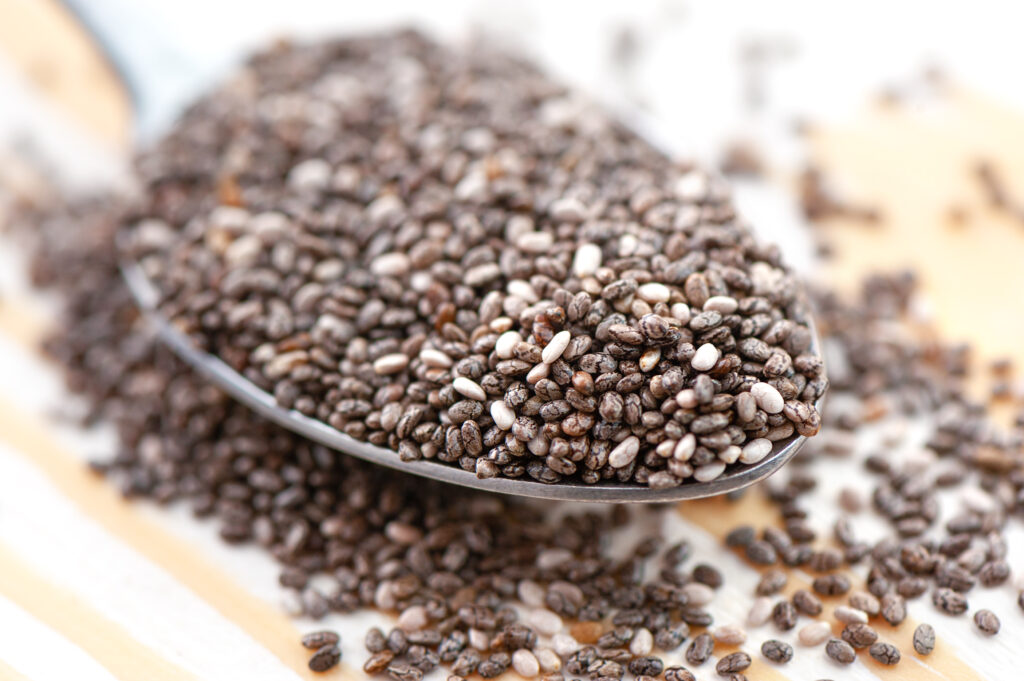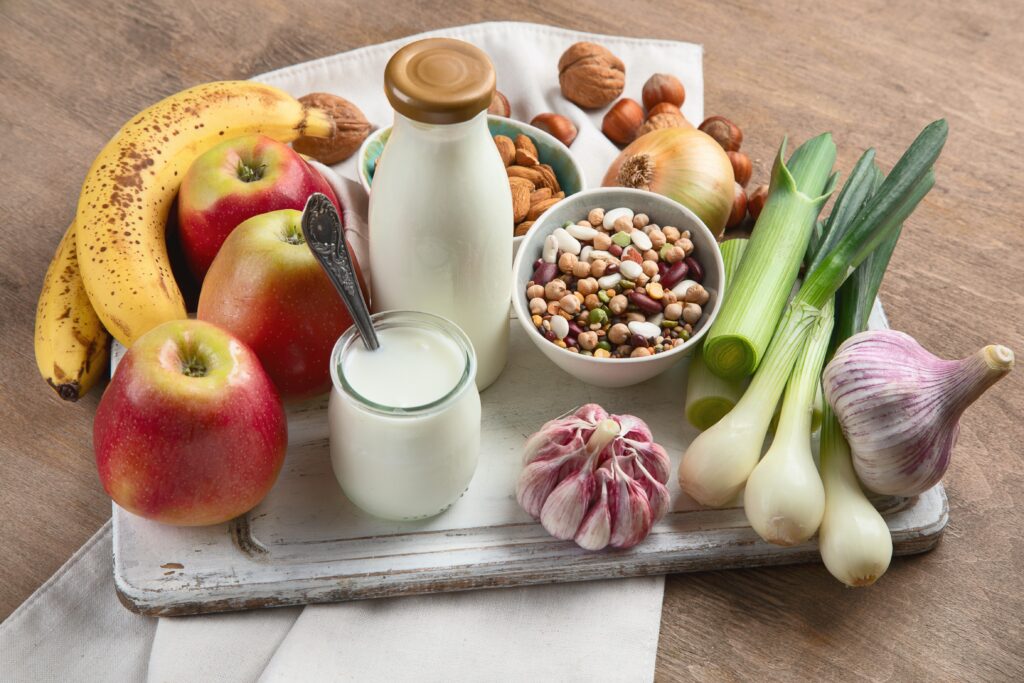When it comes to eating for better health, most of us have heard about probiotics—the live, friendly bacteria found in fermented foods like yogurt, kefir, and kimchi. They’re great for your gut, support digestion, and even help boost immunity. But there’s another side of gut health that doesn’t get talked about as much—and that’s prebiotics.
Think of your gut as a garden. Probiotics are like the seeds—beneficial bacteria that you want to grow. But seeds can’t flourish without the right soil and nutrients. That’s where prebiotic foods come in. They’re the special types of fiber that feed and support the growth of your good gut bacteria. Without prebiotics, those probiotics can’t thrive or do their job effectively.
Prebiotics aren’t a type of bacteria or live organism. They’re non-digestible plant fibers that travel through your digestive system and act as fuel for your microbiome—the community of microorganisms living in your gut. These fibers are mostly found in plant-based foods like fruits, vegetables, grains, and legumes. When your gut bacteria digest them, they produce beneficial compounds like short-chain fatty acids (SCFAs), which help lower inflammation, improve gut lining health, and support your overall well-being.
Adding prebiotic-rich foods to your diet can lead to a wide range of benefits—better digestion, reduced bloating, stronger immunity, improved mental clarity, and even better skin. And the best part? You don’t need expensive supplements or rare ingredients to start. Most prebiotic foods are affordable, accessible, and already in your kitchen.
In this blog, we’ll explore 20 easy-to-find prebiotic foods you can add to your daily meals for better digestion, immunity, and overall health.
Prebiotic Foods
Here are some of the best foods rich in prebiotics.
1. Garlic
Garlic isn’t just a flavor booster—it’s one of the most powerful natural prebiotic foods you can eat.
The bulb of garlic stores a type of fiber called inulin, which helps feed beneficial bacteria in your gut. In fact, garlic contains around 75% inulin by dry weight, which is close to chicory root, one of the richest known sources. This makes garlic highly effective at supporting digestive health, boosting immunity, and reducing inflammation.
Use it raw for maximum benefit, or add it to soups, sauces, and stir-fries to give your meals both flavor and gut-friendly fiber.
2. Onions
Onions contain soluble fibers like inulin and fructooligosaccharides, which help nourish beneficial gut bacteria.
They also contain quercetin, which helps improve digestion by supporting the growth and activity of the good bacteria living in your gut.
In addition, onions enhance the function of digestive enzymes, making it easier for your body to break down food and absorb nutrients.
Whether raw, sautéed, or roasted, onions are an easy gut-friendly ingredient. Use them in salads, sandwiches, and stir-fries.
3. Leeks
Leeks belong to the same family as onions and garlic and are naturally rich in inulin, a prebiotic fiber. This fiber helps feed beneficial gut bacteria and supports a healthy balance in your digestive system.
Leeks are especially great in soups, stews, and sautés. Use both the white and light green parts for maximum benefit.
4. Asparagus
This spring vegetable is packed with inulin, oligofructose, and fiber—all of which act as prebiotics to nourish good gut bacteria and support digestion. These compounds help improve gut balance and may also reduce bloating and inflammation.
Lightly steaming or roasting helps preserve its nutrients. Add asparagus to pasta, grain bowls, salads, or enjoy it as a flavorful side dish.
5. Bananas (Especially Green)

Green bananas are rich in pectin, a type of fiber that slows down digestion, supports regular bowel movements, and helps lower blood sugar and cholesterol levels. When pectin is broken down by gut bacteria, it produces short-chain fatty acids (SCFAs) that reduce inflammation and support a healthy gut.
Green bananas also contain resistant starch, which isn’t digested in the small intestine. This type of starch helps control blood sugar, keeps you full longer, and acts as a prebiotic, feeding the good bacteria in your gut and promoting better digestive health.
Ripe bananas still offer fiber but with less resistant starch. Try adding green bananas to smoothies or boiling them like plantains.
6. Apples
Just like green bananas, apples contain pectin—a prebiotic fiber that supports gut health and regular bowel movements.
They’re also packed with polyphenols, which have natural prebiotic effects. These compounds help nourish good bacteria like Bifidobacterium and Lactobacillus, while also fighting harmful microbes and reducing inflammation. This makes apples great for both gut health and overall wellness.
For the best benefits, eat apples raw and with the peel. Enjoy them as a snack or add them to oatmeal, salads, or yogurt.
7. Oats
Oats contain beta-glucan and resistant starch—both excellent prebiotics. These compounds feed good gut bacteria and help produce short-chain fatty acids (SCFAs) like butyrate and propionate, which support digestion and reduce harmful enzymes.
Along with avenanthramides, they help balance gut microbes, reduce inflammation, and may lower the risk of obesity, diabetes, and colon cancer.
Moreover, oats are naturally gluten-free, making them a gut-friendly choice for most people with gluten sensitivity.
Overnight oats or cooked porridge both work well. For more fiber, choose rolled or steel-cut oats instead of instant.
8. Barley
Barley is a whole grain that’s rich in beta-glucan and other soluble fibers. It helps feed gut bacteria and may support heart health. It’s also great for controlling blood sugar levels.
A study of 185 people found that non-obese individuals who ate more barley had higher levels of gut bacteria like Butyricicoccus and Subdoligranulum, which produce butyrate. They also ate more natto, a fermented food that may boost fiber breakdown.
Use it in soups, salads, or as a rice alternative.
9. Chicory Root
Chicory root is one of the most concentrated sources of inulin. It’s often ground into a coffee substitute and supports digestion and appetite control. It has a mild, nutty flavor. You can also find it added to prebiotic fiber powders.
10. Dandelion Greens
These bitter greens are excellent for liver and gut health. They contain inulin and other fibers that boost good bacteria. Dandelion greens are also rich in antioxidants and minerals. Add them to salads, smoothies, or stir-fries for a gentle detox.
11. Jerusalem Artichoke
Also called sunchokes, these knobby root vegetables are very high in inulin. Just one serving can boost the population of healthy gut bacteria. They have a sweet, nutty flavor when roasted. Try slicing them into chips or adding to soups.
12. Flaxseeds
Flaxseeds support gut health through their fiber, mucilage, polyphenols, and omega-3s. The mucilage forms a gel that eases digestion, relieves constipation, and feeds beneficial bacteria. Fermentation of these components produces SCFAs like butyrate, reducing inflammation and improving gut barrier function. Lignans and ALA also promote microbial balance, making flaxseeds a powerful prebiotic food.
In fact, flaxseeds are exceptionally rich in lignans, making them one of the best dietary sources of phytoestrogens—plant-based compounds with estrogen-like effects.
Always consume them ground, not whole, for better absorption. Add to smoothies, oatmeal, or baked goods
13. Chia Seeds

Chia seeds are rich in fiber, linolenic acid, and antioxidants, which act as prebiotics.
Studies show chia flour boosts short-chain fatty acid production, improves gut structure, lowers pH, and increases microbiota diversity. Chia extracts also enhance gut morphology, promote beneficial bacteria like Bifidobacterium and Lactobacillus, and support mineral absorption and reduced inflammation.
Soak them in water or plant milk to make chia pudding. They’re also great in smoothies and cereal.
Also read: 9 Benefits of Chia Seed Water You May Not Know
14. Seaweed
Seaweed contains unique prebiotic fibers not found in land vegetables.
A 2021 review highlights how seaweed compounds like fucoidan, laminarin, and alginate act as prebiotics—supporting gut health by improving beneficial bacteria and increasing short-chain fatty acids. These effects may boost immunity, reduce disease risk, and even help fight colon cancer. While promising, more human trials are needed.
Common edible varieties include nori, wakame, and kelp. Add them to soups, salads, or rice bowls for a nutritious boost.
15. Cocoa (Unsweetened)
Cocoa supports gut health through its rich fiber and polyphenol content, which improve bowel movements, enhance beneficial bacteria like Bifidobacterium and Lactobacillus, and increase short-chain fatty acids. Cocoa flavanols and fiber act as prebiotics, while procyanidins reduce inflammation and support gut barrier integrity.
Cocoa also modulates gut microbiota, reducing harmful species like Clostridium perfringens and E. coli, and may improve immune responses and digestive function.
For the best gut and overall health benefits, go for unsweetened cocoa products—like dark chocolate or cacao nibs—with at least 75% cocoa content.
Besides supporting gut health, cocoa is a good source of magnesium—an essential mineral that may help ease menstrual cramps and reduce period pain.
16. Konjac Root (Glucomannan)
Konjac root contains glucomannan, a powerful prebiotic fiber. It expands in the stomach and supports gut bacteria while promoting fullness.
A 2022 study found that konjac flour increased good gut microbes while reducing harmful ones, supporting weight loss and metabolic health.
Shirataki noodles are a popular konjac-based product. They’re a low-calorie, low-carb option for meals.
17. Legumes (Lentils, Chickpeas, Beans)
Legumes are rich in resistant starch and soluble fiber, which support digestion, feed gut microbes, and help manage cholesterol. These fibers increase butyrate production, supporting colonic health and reducing gut inflammation.
Legumes also contain oligosaccharides, a type of carbohydrate that acts as a prebiotic by feeding gut bacteria. However, these compounds can cause bloating and flatulence, as they’re not digested in the small intestine. Soaking and pressure-cooking legumes may help reduce these symptoms.
Add them to curries, stews, or salads for a hearty, gut-friendly fiber boost.
18. Green Peas
Green peas contain GOS (galacto-oligosaccharides), a specific type of prebiotic fiber. They also provide protein and vitamins. Add peas to soups, pastas, or mash them for a simple dip. Frozen peas are just as beneficial as fresh.
19. Cabbage
Raw cabbage is a good source of fiber and supports digestive enzymes. It promotes healthy gut flora, especially when fermented into sauerkraut. Add raw cabbage to salads or make slaws for a crunchy, prebiotic-rich side.
20. Cooked and Cooled Rice or Potatoes
When rice or potatoes are cooked and then cooled, they form resistant starch. This acts as a prebiotic and supports colon health. Use leftovers in cold rice salads or reheat gently to maintain the resistant starch structure.
Final Thoughts
Prebiotic foods are the fuel that keeps your gut bacteria alive and thriving. By adding more of these natural foods to your meals, you’ll not only support digestion but also improve immunity, energy levels, skin health, and even your mood.
Unlike supplements, these foods are easy to find, affordable, and enjoyable to eat. For best results, try pairing prebiotic-rich foods with probiotics (like yogurt, kefir, or fermented vegetables) for a complete gut-health combo known as synbiotics.
Start small, be consistent, and your gut will thank you.


